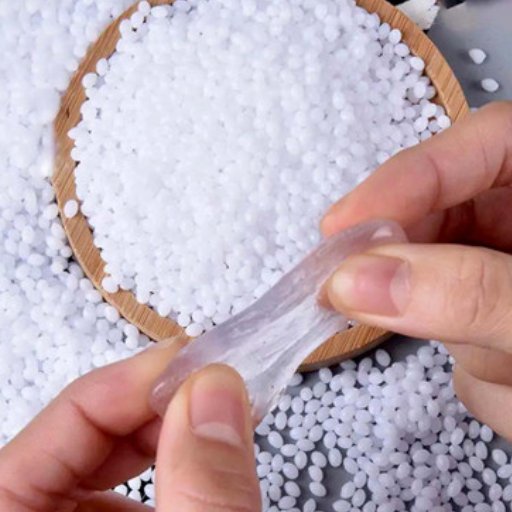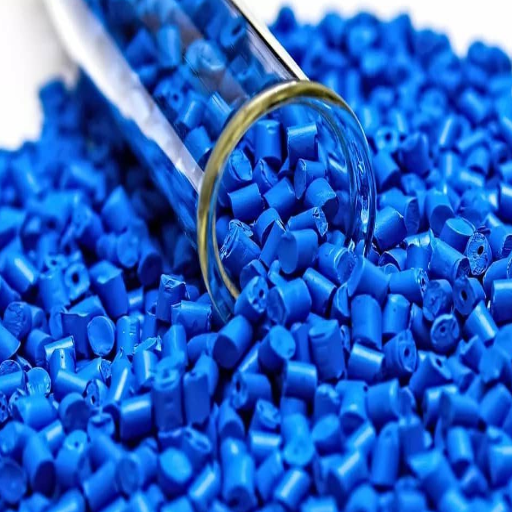In construction and manufacturing, plastic granules are the backbone for manufacturing a multitude of plastic products that are utilized all around the world. Tis article aims to provide readers with a deep understanding of plastic granules and examine their types, constituent raw materials, and the applications they serve. This blog post will help you understand the processes involved in the production of plastic granules, their distinguishing features, and their role in the packaging and automotive industries, among many others. This guide is perfect for professionals already in the industry and for those who wish to learn about the science behind everyday materials we use in our daily lives, enabling them to understand the world of plastic granules.
What Are Plastic Granules and How Are They Made?
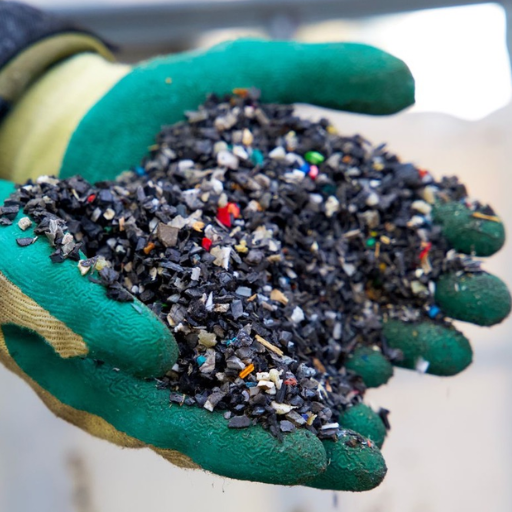
Plastic granules are raw materials used in the manufacture of a range of plastic products, and they take the form of small pellets. Generally, these granules are produced using polymerization, wherein monomers chemically link together to form polymers. The polymers are then cooled and cut into manageable granules which can be easily handled or transported. These granules can easily be melted and shaped into a myriad of contours like containers and bottles, as well as construction materials, garage door parts and automobile components. Their shape and composition enable consistent and high-quality processes.
How Plastic Granules Are Produced
The production of plastic granules requires a range of operations and controls in terms of technology parameters to achieve high-quality material. The starting step is the selection of the raw materials, which are usually of petrochemical origin like natural gas and crude oil. They are cracked into monomers like ethylene or propylene at very high temperatures (800° C – 900° C).
Then, polymerization occurs, during which monomers are chemically linked together under controlled settings. Depending on which polymer is desired, Ziegler-Natta or metallocene catalysts are used. Critical parameters also include reaction temperatures varying from 60°C to 200°C and pressures from 1 atm to 50 atm. After forming the polymer, it is necessary to extrude the polymer mass in a molten state, cool it, and cut it into granules of uniform size and shape.
These granules are optimally handled when they are between 2mm and 5mm in size and must also be checked for uniformity concerning melting point, density, and the amount of weight the molecules are distributed across the constituents. Such uniformity of the granules will enable them to be used with several different manufacturing processes which, in turn, will enhance the efficiency and quality of the finished goods made of plastic.
What Raw Materials Are Used in Making Plastic Granules?
The precursors of plastic granules consist of individual crude oil and natural gas primary constituents, which get converted into monomer units like ethylene and propylene. These undergo polymerization to produce various plastics including polyethylene (PE), polypropylene (PP), polyvinyl chloride (PVC), and polystyrene (PS). The resultant granules are further enhanced with stabilizers, plasticizers, colorants, fillers, and other additives to make them more durable, flexible, and appealing. Some of these granules are also obtained from recycled materials or renewable resources, thereby aiding in environment-friendly manufacturing initiatives.
The Production Process of Plastic Pellets
There are critical steps in the production of plastic pellets that change raw materials into standardized granules that can be applied in specialized industry sectors. The process typically begins with the melting and compounding of polymers, either virgin, recycled, or bio-based. Polymers are blended with additives in single-screw or twin-screw extruders which are set under specific conditions. For each type of polymer, temperatures within the range of 170°C to 300°C need to be maintained to ensure melting and not degradation.
Once the mixture is uniform, the homogeneous mixture is transformed into continuous strands by being forced through a die plate. These strands are cooled rapidly, either through air quenching or water channels, so that they solidify before cutting. Afterward, the strands are fed into a pelletizer, where the strands are cut into standardized granules 2-5 mm in diameter. Some systems use underwater pelletizers that combine cutting and cooling to optimize the process.
The final step include the removal of residual moisture and maintaining product quality by drying the final pellets using hot air or vacuum systems. Other noteworthy parameters are screw speeds at 100-500 rpm and pressure at 50-300 bar depending on the material. Lastly, the cooling temperature, which depends on the polymer and method utilized, needs to be kept within 10°C-50°C.
Due to the uniform size and shape of the pellets, they can be stored, transported, and even fed into downstream production processes like 3D printing, extrusion, or injection molding with effortless precision. Such a meticulous manufacturing process guarantees that the granules produced will cater to the quality demands and industrial application standards.
What Are the Different Types of Plastic Granules Available?
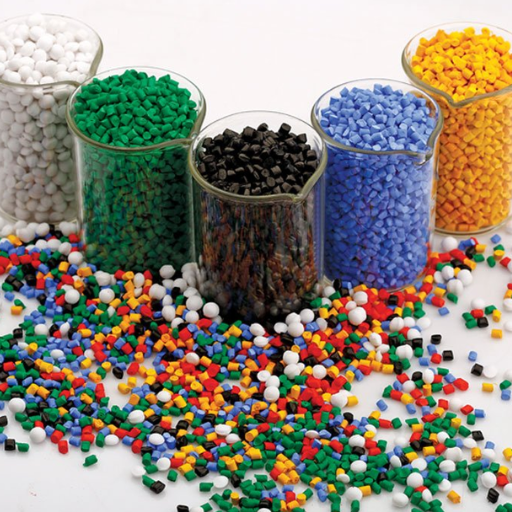
Plastic granules come in various types, each suited for specific applications based on their properties. Common types include:
- Polyethylene (PE): Widely used for packaging materials like films, bottles, and containers due to its flexibility and durability.
- Polypropylene (PP): Known for its high melting point, it’s ideal for automotive parts, textiles, and food packaging.
- Polyvinyl Chloride (PVC): Often utilized in construction for pipes, cables, and flooring, thanks to its toughness and resistance to weathering.
- Polystyrene (PS): Commonly seen in foam products, disposable cutlery, and packaging materials for its lightweight and insulating properties.
- Acrylonitrile Butadiene Styrene (ABS): Valued for its strength and impact resistance, it is frequently used in electronics, toys, and automotive components.
- Polycarbonate (PC): Known for its transparency and durability, making it suitable for optical lenses, electronics, and safety equipment.
Each type is tailored to meet specific industrial demands, ensuring versatility and adaptability across various sectors.
Understanding PP Granules
The world utilizes polypropylene (PP) granules in several applications because they are extensively lightweight thermoplastic granules. Like other materials, PP granules are also helpful in packaging, automotive, household goods, and textiles due to their resistance to chemical reactions. Apart from being a good insulator of electric and thermal energy, they are also helpful for high-performance purposes. In comparison to other plastics, PP Granules are easier to recycle thus making them more eco-friendly plus helping sustain environmental manufacturing practices. PP Granules or Polypropylene also come in several grades tailored to help with different uses.
The Role of Biodegradable Plastic Granules
Biodegradable granules of plastics like polylactic acid (PLA), starch-based polymers, and polyhydroxyalkanoates (PHA) are much more advantageous when compared to traditional plastics as they reduce the impact these materials possess on landfills and ecosystems. When these granules come in contact with heat, moisture, or other microorganisms they decompose naturally, thus aiding the environment.
Those seeking sustainability aligned with global goals to promote circular economies and waste reduction will be inclined towards these biodegradable granular plastics useful for agricultural films, disposable utensils, and food packaging. Further support to the popularization of these biodegradable options requires an optimized production process and lowered costs.
Exploring Recycled Plastic Granules Options
Using recycled plastic granules aids in mitigating the negative impacts of plastic pollution and is cost-efficient. These granules are produced from post-consumer or industrial waste plastic through a multi-step process of collecting, washing, shredding, and pulverizing the plastic into reusable material. They are widely accepted in packaging, construction, automobile, and textile industries.
Recycled granules mainly comprise polyethylene (PE), polypropylene (PP), and polyethylene terephthalate (PET). Each type is tailored for specific applications; for example, PE granules are often utilized in plastic bags and containers, while recycled PET finds its use in beverage bottles and polyester fibers.
Employing recycled plastic granules reduces dependency on prime plastics, leading to reduced carbon emissions and preservation of natural reserves. Businesses can adopt sustainable policies by augmenting these materials in their products. Nonetheless, optimal performance requires addressing the challenges of quality assurance, compatibility, and contamination control.
How Are Plastic Granules Used in Various Industries?
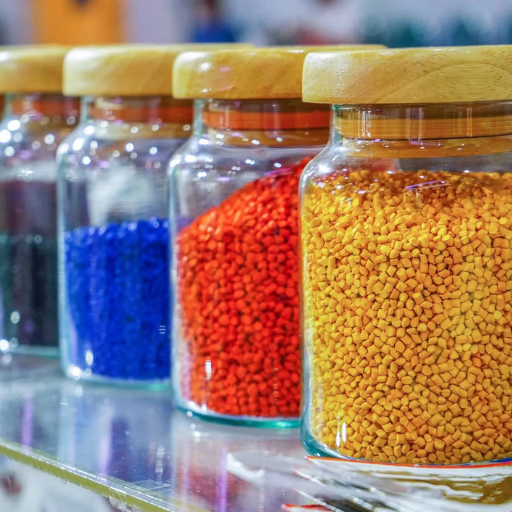
Due to their easy moldability and adaption to various industries, plastic granules are vital to the filling granules requirements. Also, they are pivotal in producing films, containers, and bottles for safeguarding raw materials or finished goods in different industries. In the automobile industry, they are molded into tough and strong parts of vehicles which helps in easing fuel consumption while improving vehicle performance. The plastic industry makes use of granules to produce insulation materials, casings, and connectors for electric devices for the electronic industry. They are also used in construction works where they are changed into strong pipes, efficient fittings, and panels for building insulation. With the benefits mentioned above, it is clear why plastic granules have become so important.
Applications in Plastic Products Manufacturing
I’ve encountered them personally through the manufacturing process of several products such as automobile components, electronic casings, and other items that require durable and light materials. In my opinion, plastic granules are a very key component due to their wide usage. I also find them in various daily products such as containers, bottles, and various other forms of packaging. Their dual nature enables them to adapt and be flexible to varying requirements in numerous departments.
The Use of Plastic Granules in Packaging
Because of their lightweight properties, cost-effectiveness, and flexibility, plastic granules are widely used in the packaging sector. They can be made into films, containers and other types of packaging. For instance, HDPE granules have high strength-to-density ratios, which makes them appropriate for heavy-duty packaging, like detergent bottles and industrial containers. Also, the mechanical properties and recyclability of PET granules make them perfect for transparent food-grade packaging products like water bottles.
What Are the Properties of Plastic Granules That Make Them Essential?
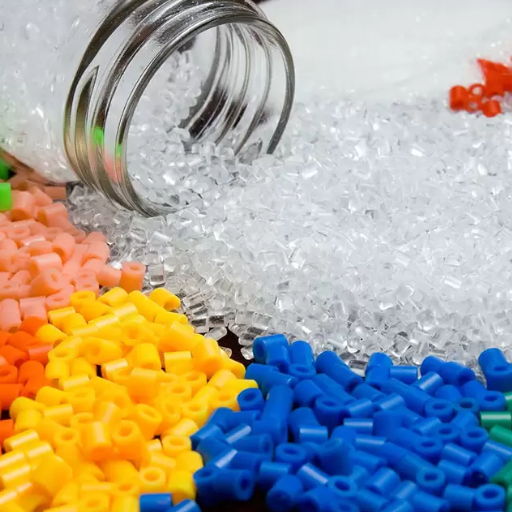
Plastic granules have a number of key qualities which make them extremely valuable across various industries. Their lightweight aids in easier handling as well as reduces transportation costs. Moreover, their varying durability ensures resistance to chemicals, weathering, and wear which assures prolonged applications. Plastic granules are also highly versatile as they can be molded into complex shapes and customized for unique requirements. In addition, their insulating capabilities, both thermal and electrical, make them suitable for use in electronics and construction. All of these characteristics combined with reduced manufacturing cost, and easy recyclability amplify the utility of plastic granules in modern manufacturing.
Physical and Chemical Properties of Plastic Granules
Plastic granules have distinct physico-chemical properties which render them essential in different industries. From a physical standpoint, lightweight, awe wear, and corrosion resistance make them durable while ensuring utility in tough environments. Chemical properties include high stability, non-reactivity with most chemicals, and endurance to temperature changes which is dependent on the type of polymer utilized. These properties alongside their ease of melting and reshaping provide boundless applications for plastic granules can be employed for.
Why Plastic Granules Are an Essential Raw Material
Adaptability, efficiency, and cost-effectiveness make plastic granules pivotal to its contemporary manufacturing system. These granules serve as the basis for producing an extensive range of products from packaging to automotive parts, electronics, and even medical equipment. Their lightweight yet durable nature makes them ideal for cost-effective transportation and enhancing the product’s life span. Further, plastic granules can be melted, molded, and reshaped to fit distinct design and production specifications, which offers them unmatched versatility. They also play a key role in sustainable manufacturing since the use of recycled plastic granules reduces waste and the environmental impact of production processes. In meeting the demands of various industries, plastic granules benefit the global economy as an irreplaceable resource.
Advantages of Plastic Granules Over Other Materials
- Cost-Effectiveness: In my experience, plastic granules stand out in comparison to other materials because of their low costs in production, transportation, and processing. Their low cost makes them a preferred material for large-scale manufacturing.
- Versatility: Granules of plastic can be easily shaped into different forms which makes them useful in different sectors such as packaging, automotive, and construction. Comparatively, other materials are less flexible than this.
- Recyclability: Unlike many conventional materials, plastic granules from used plastics contribute to the circular economy by minimizing waste and environmental harm. This makes them a responsible choice to help aid the depletion of the environment.
- Durability: When compared with metals or glass, plastic granules are light-weight and strong which ensures that products manufactured from them can endure a longer lifespan in a variety of conditions.
How Is the Plastic Granules Market Evolving?
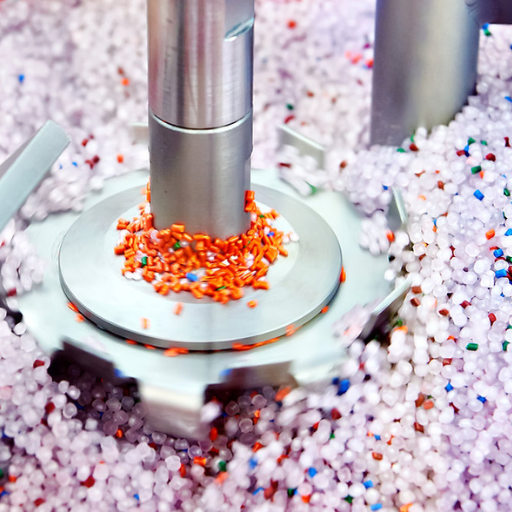
The market for plastic granules is rapidly changing due to technological changes, demand from various sectors, and increased awareness of sustainability. New methods of production have improved both the quality and quantity of plastic granules, enabling their use in new areas such as 3D printing and bioplastics. Demand from the automotive industry, electronics, and packaging also continues to drive growth in the market. In addition, the focus on environmental issues fuels the need for biodegradable plastic granules, which forces businesses to adopt greener policies. All these changes suggest a more agile and flexible market responsive to industrial growth and worldwide sustainability goals.
Current Trends in the Plastic Granules Market
The market for plastic granules is impacted by various important dynamics that are currently affecting its economy. To begin with, there is a stronger movement towards sustainable and ecological practices as manufacturers are increasingly using recycled and biodegradable materials to fuel granules due to the market and regulatory eco-system. This is further supported by the improved efficiency and quality provided by advanced recycling technologies. Secondly, the growth of bioplastics and new materials is gaining the attention of the market because of their environmental impact and the use of renewables. Sectors like automotive, consumer goods, and packaging are looking into these bioplastics and alternatives to support global sustainability targets. Lastly, the development of new high-performance polymers and lightweight materials is propelling the use of plastic granules in multifunction vessels in the aerospace and medical sectors, thereby improving and energizing functionality and efficiency. These dynamics highlight the trends of the market that are fostering innovation and developing capabilities in response to global requirements.
Factors Influencing the Cost of Plastic Granules
A number of market and technical factors influence pricing for plastic granules, some of the most notable are:
- Raw Material Prices: The prices of fuel oil or natural gas greatly affect the price of plastic granules since they are the main raw material sources for many plastics, for example, polymethyl or polypropene. Suggested prices of oil around the world has a mark sensitive to the cost of production.
- Production Process: The process of manufacturing using extrusion, injection molding, or blow molding affects the costs depending on the level of difficulty, energy needed, and efficiency. For example, produced granules of exceptional quality through modern means are likely to cost more due to superior performance attributes.
- Type of Plastic: The price is also reliant on the thermoplastic form used. Thermoplastic elastomers such as PVC and ABS, along with engineering plastics like PEEK, have varying levels of melt flow index (MFI), tensile strength, and temperature resistance which correspond with the price. The cheaper types of material are more common but materials with high performance are used when necessary.
- Additives and Fillers: Modification of granules with other compounds such as UV stabilizers or flame retardants drives the price up due to an increase of guarded durability and strength. Granules filled with glass fibers are also more expensive. Silicate compounds WRH also raise the stability and strength of the granules.
- Market Demand & Supply: The needs of the general public including the construction, automotive, and packaging industries are the major factors affecting the price in the international markets. A shift in the supply of certain grades as well as their demand can have dramatic effects on their price.
- Sustainability Factors: The adoption of bioplastics and granules from recycled materials is on the rise due to regulatory and environmental concerns, although their cost may be higher because of additional processing.
- Quality Standards: Plastic granules that fall within certain certifications (ISO standards for instance) or are tailored for specific functions like medical-grade plastics typically have a higher price.
Knowing these dynamics, along with their technical details, can shed light on why certain industry costs fluctuate and aid relevant industry players in their decision-making.
The Future of Recycled Plastic Granules
The growth prospects for recycled plastic granules are still high with the growth of environmental concerns, enhanced regulations, and improvements in recycling technology. Governments around the world are taking steps to manage the environmental impact of plastic waste by banning single-use plastic products and encouraging the use of recycled materials. Such policies are positively impacting the use of recycled plastic granules in manufacturing.
There are also changes taking place due to technical innovations. Improved sorting and processing of plastic wastes is yielding better quality recycled granules which can be used in high-value end-use applications such as automotive components, consumer products, and food grade packaging. Businesses are focusing on developing new chemical recycling systems that safely transform non-biodegradable plastics into pure monomers due to the greater potential for use and purer end products.
More businesses aiming to appeal to eco-friendly consumers are using recycled materials branded with a sustainability label thus fueling the demand for eco-friendly products. Regardless of hurdles such as granule price and maintaining production quality consistency, the increased focus on renewable resources ensures recycled plastic granules will be pivotal in mitigating global plastic waste and advancing sustainability efforts.
References
Frequently Asked Questions (FAQ)
Q: What are plastic granules and how are they used?
A: Plastic granules are small pellets that serve as the raw material in the production of various plastic products. These granules are widely used in industries to create new plastic products such as bottles, containers, and other everyday items. The granules are melted and molded into desired shapes through different manufacturing processes.
Q: What types of plastic granules are available?
A: Plastic granules are made from different types of polymers, including polyethylene, polypropylene, polyvinyl chloride, and more. Each type has specific properties and applications, making them suitable for various industries.
Q: What raw materials are used to produce plastic granules?
A: Plastic granule raw material can be made from either virgin polymers or recycled plastic. Virgin polymers are newly manufactured, while recycled granules are made from collected plastic waste, contributing to the recycling of plastic.
Q: How are plastic granules produced?
A: The production of plastic granules involves melting down plastic materials and cutting them into small pellets. The process can use virgin plastic or collected plastic waste, which is turned into plastic granules through recycling processes.
Q: What are the applications of plastic granules?
A: Applications of plastic granules include the manufacturing of packaging materials, automotive parts, household products, and construction materials. Granules are widely used due to their versatility and ability to be molded into various shapes and products.
Q: Why are plastic granules widely used in industries?
A: Plastic granules offer several advantages, including ease of handling, uniformity in size, and the ability to be efficiently melted and molded. This makes them ideal for mass production and reduces waste in manufacturing processes.
Q: How does using recycled plastic granules benefit the environment?
A: Using recycled plastic granules helps reduce the demand for virgin plastic, conserves natural resources, and minimizes plastic waste in landfills. Recycling processes transform collected plastic waste into new granules, promoting sustainable manufacturing practices.
Q: What is the significance of the raw material form in plastic production?
A: The raw material form, such as plastic granules, is crucial in plastic production as it determines the ease of processing and quality of the final product. Granules provide a consistent and manageable form for manufacturers, ensuring efficient production lines.
Q: How can you choose the right plastic granules for your business?
A: Choosing the right plastic granules for your business involves considering the specific requirements of your products, such as durability, flexibility, and environmental impact. It’s essential to select granules that meet industry standards and suit your production needs.


